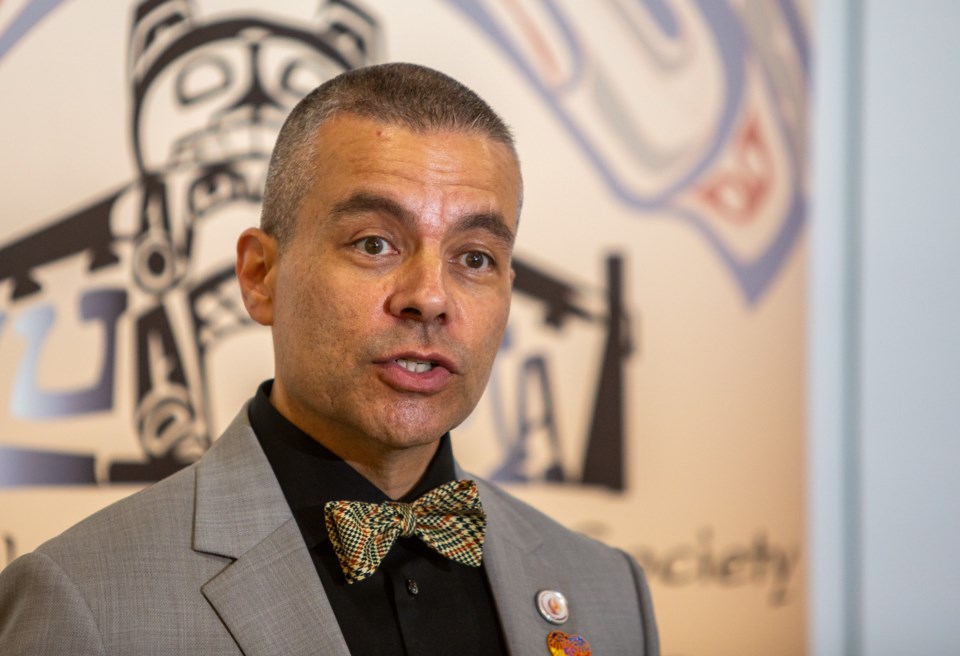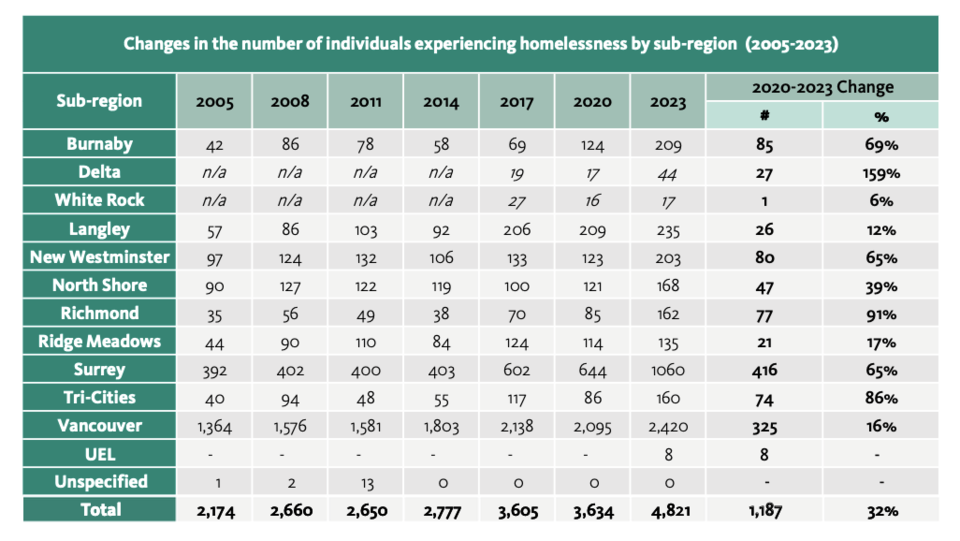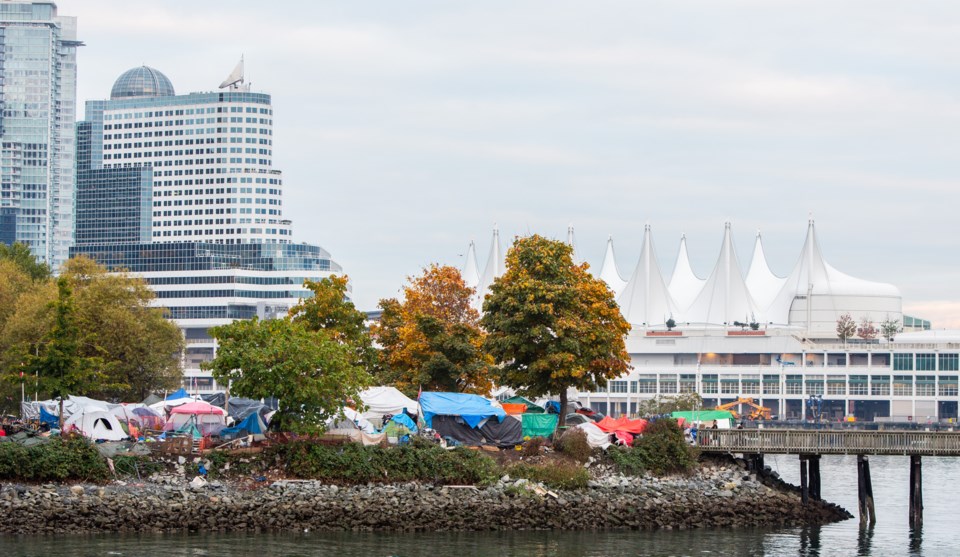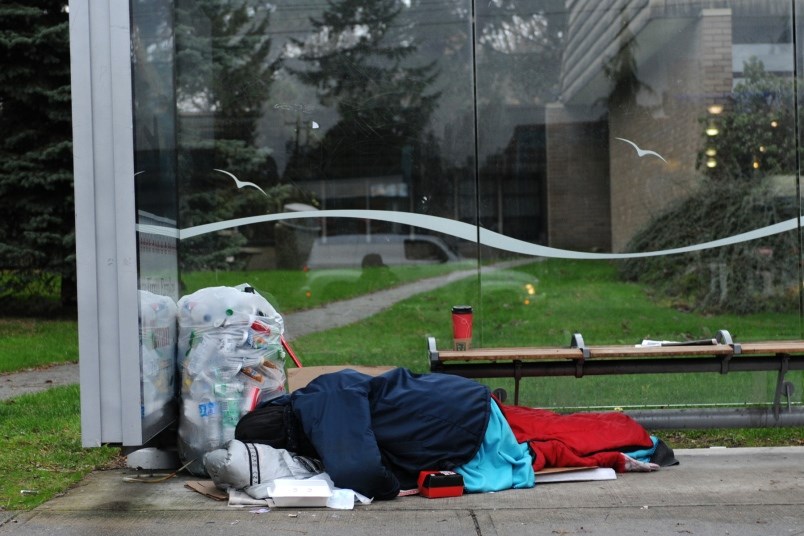The number of people in Metro Vancouver identified as homeless during a point-in-time count in March totalled 4,821 — a 32 per cent increase over the last regional count in March 2020 when 3,634 were recorded without a home.
A report released Thursday by the Homelessness Services Association of BC indicated that 1,461 of the people counted in 11 cities during the 24-hour period were considered unsheltered, an increase of 432 over the count in 2020.
“We know this is an undercount,” said Stephen D’Souza, executive director of the Homelessness Services Association of BC.
“Please see this as a snapshot or a baseline of what homelessness looks like in our community. We know that we don't capture all populations equally, and there are underrepresented groups within our data set.”
Consistent with previous Metro and City of Vancouver counts is that Indigenous peoples were again overrepresented in the data, with 33 per cent identified as homeless; the Indigenous population in Metro is estimated at 2.4 per cent.
A survey conducted as part of the count found that 64 per cent of Indigenous respondents said they had either lived in a residential school or had experienced the intergenerational trauma of a relative who attended a school.
In addition, more than half of Indigenous respondents had experience with the foster care system.
While Vancouver (2,420) and Surrey (1,060) had the most homeless, the nine other cities in the region all saw increases in homelessness, including the Tri-Cities, where numbers almost doubled from 86 in 2020 to 160 in 2023.

Though the general population increased in Metro since the count in 2020, David Wells of the Indigeonous Homelessness Steering Committee emphasized it had not increased at the rate of homelessness.
"Certainly, the [overall] population has grown, but not by that much — and this is an undercount," Wells said at a news conference in the Downtown Eastside, where homelessness persists.

Delta sees 159% increase
Findings for other cities were:
• Burnaby, 209 people counted as homeless in 2023 compared to 124 in 2020.
• Delta (44 from 17)
• White Rock (17 from 16)
• Langley (235 from 209)
• New Westminster (203 from 123)
• North Shore (168 from 121)
• Richmond (162 from 85)
• Ridge-Meadows (135 from 114)
Volunteers also counted eight homeless people in the University Endowment Lands.
The main driver of people being homeless was not having enough income, followed by issues related to substance use and mental health — consistent with previous surveys, although Lorraine Copas highlighted the widening income gap in the region.
Copas, chair of the Greater Vancouver Community Advisory Board for Reaching Home, said her reading of federal government statistics is that a person would need to earn $56,000 per year to rent a studio for $1,400 a month.
“So when you look at people who are struggling on the streets, you know that they won't get past the landlord cheque — never mind have the kind of income that they need to secure that housing,” Copas told reporters.
“The gap keeps growing, and you can't do as much. There's new housing being built, but the lag time is three years. So when you put all of that together, it talks about the structural and systemic failure will face. But I also think the numbers today talk about the human consequences of that.”

Housing minister's response
Housing Minister Ravi Kahlon said in an email Thursday to Glacier Media that the homeless count report confirms “what we know, which is that increased supports and services are needed to prevent and address homelessness in B.C. communities.”
Kahlon said the pandemic and rising global inflation has created significant challenges for people accessing housing since the last count was done in 2020.
The minister said government has been “taking action” on new initiatives to prevent and reduce homelessness in B.C. Those actions, he said, include building and operating more supportive housing.
Since 2017, he said, more than 3,350 supportive homes for people experiencing homelessness have opened or are underway in Metro Vancouver. That work is an addition to the expansion of complex care housing services, shelter and low-income assistance programs, including emergency shelters.
“We are also implementing Belonging in B.C., a comprehensive homelessness plan grounded in prioritizing cultural safety, Indigenous and community partnerships, and the inclusion of people with diverse identities and needs,” Kahlon said.
Other findings of the count:
• Majority of homeless were men between ages of 25 and 54.
• The number of people who identified as non-binary, agender or two-spirit was higher in unsheltered population; total of 289 people identified as 2SLGBTQ+.
• Of 2,320 people who responded to question about how long they had been homeless, 1,597 said one year or longer.
• A total of 81 per cent of respondents said they became homeless in the same community where they were once housed.
• Of 2,467 who answered questions about their health, 1,115 said they had a medical condition or illness, 936 reported a disability, 1,198 cited a mental health issue and 1,542 said they had addictions.
• More than 700 people out of 2,355 surveyed said they had acquired a brain injury.
• At least 25 per cent of people surveyed had spent at least one night in an encampment.




